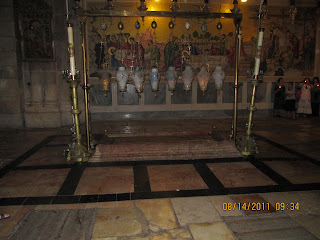The City of David is the birthplace of the city of Jerusalem, the place where King David established his kingdom, and where the history of the People of Israel was written. It is within walking distance from the Old City of Jerusalem and the Western Wall, and is one of the most exciting sites in Israel Holy City
In the year 1004 BCE, King David conquered the city from the Jebusites and established his capital there. It was here where the People of Israel were united under King David’s rule, here where the Holy Ark was bought and here where the First Temple
Today the City of David is an archeological park that tells the story of the establishment of Jerusalem Israel
One of the most fascinating parts of the City of David is the tunnel of Shiloh - a 533-meter-long tunnel that was carved during the period of King Hezkiyahu. The tunnel extends from the city to the well atShiloh, and is an astounding engineering feat. Its builders carved the tunnel through solid rock beginning from opposite ends and succeeded in making the two sides meet in the middle. Visitors can walk through the tunnel which is partially filled with water, and come out at the pools of Shiloh .
The City of David
The Old City and the Western Wall The Western Wall in the midst of the Old City in Jerusalem is the section of the Western supporting wall of the Temple Mount which has remained intact since the destruction of theSecond Jerusalem Temple (70 C.E.). It became the most sacred spot in Jewish religious and national consciousness and tradition by virtue of its proximity to the Western Wall of the Holy of Holies in the Temple, from which, according to numerous sources, the Divine Presence never departed. It became a center of mourning over the destruction of the Temple and Israel's exile, on the one hand, and of religious - in 20th century also national - communion with the memory of Israel's former glory and the hope for its restoration, on the other. Because of the former association, it became known in European languages as the "Wailing Wall".
The Old City of Jerusalem There is a magical quality about the Old City of Jerusalem that does not exist anywhere else in the world. Perhaps it is due to the glorious history of the towering stone walls and ancient buildings, or the sacred atmosphere that surrounds the holy sites of Jewish, Christian, and Moslem religions. The enchanting quality of Jerusalem may also come from the colorful markets and narrow alleyways, or from the city’s dynamic history - a history woven with war and peace, love and hate, destruction and resurrection.
The Old City was originally built by King David in 1004 B.C.E. and has always been considered the center of the world. Ancient maps show the three continents known at the time: Europe, Asia, and Africa, situated in a circle with Jerusalem at their center. Since then Jerusalem has been cherished and glorified by kings, rulers, and conquerors who attempted to storm its walls and adored by ordinary people who made it the loadstone of their faith. This was the place where the Jews built the Temple, where Jesus was crucified, and where Mohammed rose to Heaven. Pilgrims, beggars, merchants, students of great scholars, warriors and slaves have all walked its streets, and have praised and revered Jerusalem.
The Christian Quarter
The Christian quarter has more than 40 churches, monasteries, and hostels that were built for Christian pilgrims. In the heart of the Christian quarter is the Church of the Holy Sepulchre or the Church of the Resurrection, which, according to Christian tradition, was the site upon which Jesus was crucified and buried following his final walk along the Via Dolorosa, or the Stations of the Cross. The Via Dolorosa begins at the courthouse - which was located at what is now the Lions’ Gate – also known as St. Stephen’s Gate-- and ends at Calvary Hill or Golgotha, where the Church is now located. Many Christian pilgrims walk along the Via Dolorosa following the final path of Jesus.There are several sites that are important to the Christian tradition inside the Church of the Resurrection, including the Stone of Anointing, the tomb, and the rotunda.
The market - one of Jerusalem’s most popular tourist attractions, is located in the Christian quarter and is a noisy, colorful market where one can buy decorated pottery, candles, souvenirs, ethnic costumes, mats, rugs, beads, and jewelry, glass lamps and decorative items. The merchants call out their wares and the food stands emit tantalizing aromas. One of the most outstanding attractions of this market is that shoppers are expected to bargain for wares, and if you insist, you can bargain shopkeepers down from their original price.
That is all for today - we toured for nine hours mostly walking, wading through water under the tunnels of the City of David climbing steps and going through tunnels representing centuries of history. Off to Bethlaham tomorrow.



















No comments:
Post a Comment